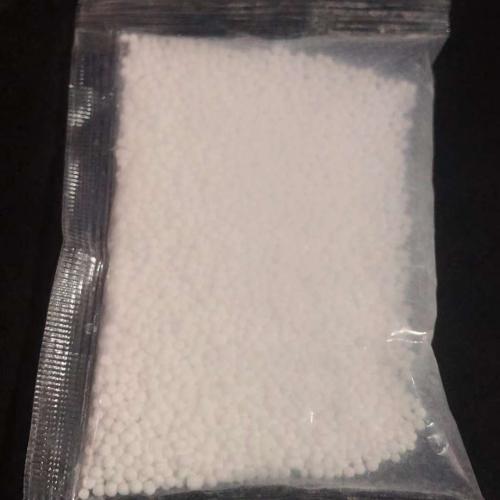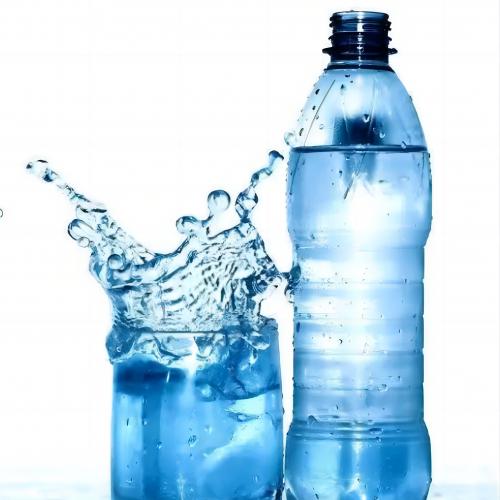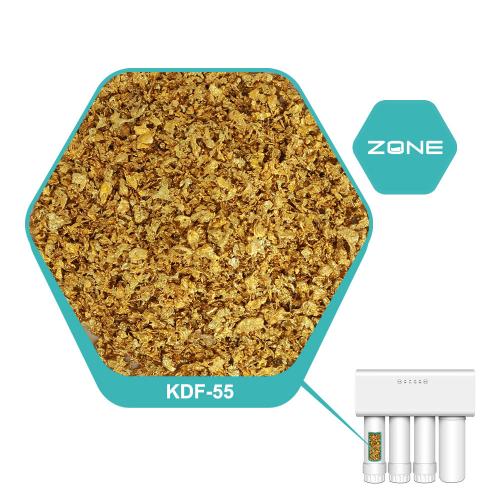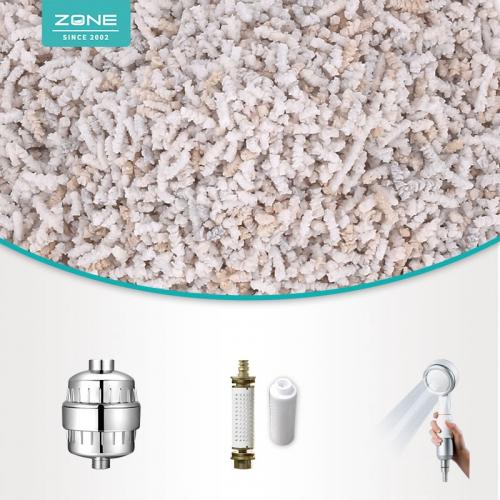180 commonly used terminology for water treatment(sewage treatment)
Update time: 23-02-02 Views: 1325
180 commonly used terminology for water treatment(sewage treatment)
By Zhao from Onlyzone,a manufacturer of water treatment bio ceramic ball filter media in China.
88. Domestic sewage: mainly the discharge water produced by various kitchen water, washing water and toilet water used in human life, mostly non-toxic inorganic salts, domestic sewage contains a lot of nitrogen, phosphorus, and sulfur, causing disease There are many bacteria.
89. Municipal sewage; collectively referred to as sewage discharged into urban sewage systems. The combined sewerage system also includes production wastewater and intercepted stormwater. Municipal sewage mainly includes domestic sewage and industrial sewage, which are collected by the urban drainage pipe network and transported to the sewage treatment plant for treatment.
90. Industrial wastewater: refers to the wastewater, sewage and waste liquid produced in the process of industrial production, which contains industrial production materials, intermediate products and products lost with water, as well as pollutants produced in the production process.
91. COD; chemical oxygen demand, the amount of oxidant consumed in the process of chemical oxidation of substances that can be oxidized in water under specified conditions, expressed in milligrams of oxygen consumed per liter of water sample, usually recorded as COD.
92. BOD; the amount of dissolved oxygen in water consumed by microorganisms decomposing organic matter in surface water bodies is called biochemical oxygen demand, usually recorded as BOD, and the common unit is mg/L.
93. BC ratio: Indicates the biochemical degree of pollutants in water, 0.1-0.25 is difficult to biochemical, 0.25-0.5 is biochemical, >0.5 is easy to biochemical.
94. TOC; refers to the total carbon content of dissolved and suspended organic matter in water, reflecting the content of oxidized organic compounds in water, and the unit is ppm or ppb.
95. Ammonia nitrogen: refers to nitrogen existing in the form of free ammonia (NH3) and ammonium ions (NH4+) in water.
96. Organic nitrogen; the general term for nitrogenous substances combined with carbon, such as protein, amino acid, amide, urea, etc.
97. Kjeldahl nitrogen; TKN refers to the nitrogen content measured by the Kjeldahl method. It includes ammonia nitrogen and organic nitrogen compounds that can be converted into ammonium salts under these conditions.
98. Nitrate nitrogen; NOxˉ refers to the nitrogen contained in nitrate. Nitric acid and nitrite only and.
99. Total nitrogen; TN is the total amount of various forms of inorganic and organic nitrogen in water.
100. Total phosphorus; TP, the result of determination after the water sample is digested to convert various forms of phosphorus into orthophosphate, measured in milligrams of phosphorus per liter of water sample.
101. Hypophosphorus; Phosphate in the form of H2PO2ˉ cannot be removed by normal chemical phosphorus removal, and needs to be converted into sulfate to remove it.
102. Chromaticity: refers to the degree of yellowish or even yellowish brown of soluble substances or colloidal substances contained in water.
103. Grille; used to remove floating objects in water.
104. Primary sedimentation tank; also known as primary sedimentation tank, a structure used to remove sinkable and floating objects in sewage treatment.
105. Adjusting pool; a structure used to adjust the flow of water in and out. It mainly plays the role of regulating water quantity and water quality, as well as regulating the pH value and water temperature of sewage, and has the function of pre-aeration regulation, and can also be used as emergency drainage.
106. Accident pool; Accident water collection pool is a kind of structure required in the sewage treatment process. When dealing with high-concentration wastewater discharged from some chemical and petrochemical factories, accident pools are generally set up.
107. Grease trap; use the different proportions of suspended solids and water in wastewater to achieve the purpose of separation.
108. Air flotation: A large number of fine air bubbles are generated in the water, so that the air is attached to the suspended particles in the form of highly dispersed micro air bubbles, resulting in a state of density lower than that of water, and the principle of buoyancy is used to make it float on the water surface, thereby realizing solid-liquid separate.
109. Biochemical pool; the field pool where bacteria metabolize in biochemical treatment.
110. Secondary settling tank; that is, the secondary settling tank. The secondary settling tank is an important part of the activated sludge system. Its main function is to separate the sludge, clarify the mixed solution, concentrate and return the activated sludge.
111. Advection type sedimentation tank; the plane of the tank body is rectangular, and the inlet and outlet are respectively arranged at both ends of the tank length.
112. Vertical flow sedimentation tank; also known as vertical sedimentation tank, it is a sedimentation tank in which wastewater flows vertically in the pool. The plane figure of the pool body is circular or square, and the water enters the pool from top to bottom through the water inlet pipe in the center of the pool. Settling by the sludge's own weight.
113. Radial flow sedimentation tank; waste water enters the tank from the water inlet pipe in the center of the tank, and flows slowly around the tank along the radial direction. The suspended matter settles in the flow and enters the sludge hopper along the slope of the bottom of the pool, and the clarified water overflows out of the ditch around the pool.
114. Sludge pool: generally a pool for holding backflow sludge and excess sludge.
115. Monitoring pool; also known as clear water pool, used to hold treated sewage.
116. Coagulation; the process of colloidal loss of stability. Commonly known as colloid destabilization.
117. Flocculation; the process in which destabilized colloids coalesce into large flocs.
118. Coagulation; the whole process of the two stages of destabilization and flocculation to form large-particle flocs. General term for coagulation and flocculation
119. Metabolism: The exchange of matter and energy between the body and the external environment and the self-renewal process of matter and energy in the organism are called metabolism. Metabolism includes anabolism (assimilation) and catabolism (catabolism).
120. Bacteria group: Some bacteria are determined by their genetic characteristics, and the bacteria stick to each other in a certain arrangement, and are surrounded by a common capsule to form a bacterial group of a certain shape, which is called a bacteria group.
121. Filamentous bacteria; a type of bacteria with a filamentous structure. Skeleton of the mycoplasma.
122. Autotrophic bacteria; Bacteria that use inorganic carbon sources as carbon sources
123. Heterotrophic bacteria; Bacteria that use organic carbon sources as carbon sources
124. Anaerobic environment; in theory, anaerobic means that there is no molecular oxygen and no nitrate nitrogen. But it is impossible to achieve in practice. In engineering, DO<0.2 is anaerobic,
125. Aerobic environment; both dissolved oxygen and nitrate nitrogen. In engineering, DO>0.5 or more is aerobic.
126. Anoxic environment; refers to the absence of molecular oxygen and nitrate nitrogen. In engineering, DO in the range of 0.2~0.5 is hypoxia.
127. Activated sludge method; a sewage treatment method realized through the adsorption, metabolism, and separation of mud and water of bacterial micelles.
128. Biofilm method; a method of treating organic sewage by using microorganisms (ie, biofilm) attached to and growing on the surface of certain solid objects.
129. Hydraulic retention time; abbreviated as HRT, water treatment process term, hydraulic retention time refers to the average residence time of sewage to be treated in the reactor, that is, the average reaction time between sewage and microorganisms in the bioreactor.
130. Mud age; refers to the average residence time of microbial cells in the aeration tank. For the activated sludge method with reflux, the sludge age is the time (in days) required for the average renewal of the sludge in the whole tank of the aeration tank.
131. SV; 30-minute sedimentation ratio refers to the ratio of the mixed solution of the activated sludge in the aeration tank to the full scale of the 1000ml measuring cylinder after being allowed to settle for 30 minutes. The volume ratio is the sludge sedimentation ratio (%), also known as the sludge sedimentation volume (SV30), expressed in mL/L. Because the sludge can generally reach or approach the maximum density after 30 minutes of sedimentation, so this time is generally used as the standard time for the determination of this indicator.
132, MLSS; sludge concentration, the weight of dry sludge contained in 1 liter of aeration tank sludge mixture
133. MLVSS; mixed liquor volatile suspended solids concentration, indicating the concentration of organic solids in the mixed liquor activated sludge.
134, RSS; sludge concentration of return sludge.
135. SVI; sludge volume index, which is an index to measure the settling performance of activated sludge. Refers to the volume (in mL) occupied by the corresponding 1g of dry sludge after the mixed solution of the aeration tank has been settled for 30 minutes, that is: SVI = volume of sludge after 30 minutes of static settlement of the mixed solution (mL) / dry weight of sludge ( g), namely SVI=SV30/MLSS.
136. Internal reflux ratio; the ratio of the reflux flow of nitrifying liquid to the influent flow, generally expressed as a percentage, and the symbol is r.
137. External return ratio; also known as sludge return ratio, the ratio of return sludge flow to influent flow. Generally expressed as a percentage, the symbol is R.
138. Inoculation; the process of adding activated sludge or granular sludge to the biochemical treatment system.
139. Domestication; the conversion process to make the mature fecal sewage activated sludge gradually have the ability to treat specific industrial wastewater.
140. Organic load: refers to the amount of pollutants removed by activated sludge per unit mass in unit time.
141. Volume load: the volume of the unit aeration tank, the weight of pollutants that can be removed in unit time.
142. Impact load: In the operation of sewage treatment, the amount of sludge is generally maintained at a certain level, and the volume of the reactor (aeration tank, anaerobic reactor, etc.) will of course not change. However, if the influent water quality changes greatly (COD soars or drops sharply), the sludge load and volumetric load will change greatly, which will affect the sludge microorganisms, which is the so-called impact load.
143. orp; Oxidation-reduction potential, is the measurement index of the oxidation-reduction ability of aqueous solution, and its unit is mV.
144. DO; Molecular oxygen dissolved in water is called dissolved oxygen, usually recorded as DO, expressed in milligrams of oxygen per liter of water.
145. Aeration; A means of bringing air into strong contact with water, the purpose of which is to dissolve the oxygen in the air into the water, or to expel unwanted gases and volatile substances from the water into the air.
146. Oxygenation rate; in wastewater treatment, the ability of the aerator to supply oxygen to the liquid is called the oxygenation capacity, expressed in kg/(m3˙h) [10°C or 20°C, 101.3kPa). The oxygenation capacity of a liquid per kilowatt-hour is called oxygenation efficiency.
147. Push-flow activated sludge method: The sewage is pushed forward evenly, the waste water enters from the head end of the pool and flows out from the tail end of the pool, and the liquid flow in the front section does not mix with the liquid flow in the back section.
148. Sequencing batch activated sludge method; an activated sludge sewage treatment technology operated by intermittent aeration. Its main feature is sequential and intermittent operation in operation.
149. Microscopic examination; short for microscopic examination. It is to take samples of the specimens to be inspected, make films, observe, analyze and judge under the microscope.
150. Protozoa; Protozoa is the lowest class of eukaryotic single-celled animals in the animal kingdom, and the individual is composed of a single cell.
151. Metazoa; the general term for all animals except protozoa (metazoa subkingdom).
152. Expansion of non-filamentous bacteria; non-filamentous bacteria caused by the accumulation of a large amount of highly viscous substances (such as glucose, mannose, arabinose, rhamnose and deoxyribose, etc.) in the bacteria of the gelatinous bacteria swell.
153. Filamentous bacteria expansion; sludge filamentous bacteria expansion caused by the reproduction of a large number of filamentous bacteria in activated sludge.
154. Peroxidation: Microbes continue to oxidize themselves when there is sufficient oxygen and insufficient nutrients, that is, insufficient carbon sources in sewage.
155. Exogenous respiration; under normal circumstances, microorganisms use the energy supplied by the outside to carry out respiratory metabolism, which is called exogenous respiration.
156. Endogenous respiration; if the outside world does not provide energy, but uses the energy substances stored in the body to carry out respiratory metabolism, it is called endogenous respiration.
157. Aging; sludge disintegration caused by excessive sludge age, long-term low load or overoxidation.
158. Residual sludge: refers to the activated sludge discharged out of the system from the secondary sedimentation tank (or sedimentation area) in the activated sludge system.
159. Ammonification: refers to the process in which nitrogen-containing organic substances such as protein and urea are decomposed by microorganisms and converted into ammonia.
160. Nitrification; refers to the process in which ammonia is oxidized to nitric acid under the action of microorganisms.
161. Denitrification; refers to the biochemical process in which bacteria reduce nitrogen (N) in nitrate (NO3−) to nitrogen (N2) through a series of intermediate products (NO2−, NO, N2O).
162. Short-range nitrification and denitrification; short-range nitrification means that NH3 generates nitrite and no longer produces nitrate; and N2 is directly generated from nitrite, which is called short-range denitrification.
163. Simultaneous nitrification and denitrification; nitrification and denitrification reactions often occur in the same treatment conditions and in the same treatment space, therefore, these phenomena are called simultaneous nitrification/denitrification (SND).
164. Anaerobic ammonium oxidation; that is, the biological reaction process in which anammox bacteria use nitrite as an electron acceptor to oxidize ammonia nitrogen into nitrogen under anoxic conditions.
165. Chlorination at breaking point; NH3-N in wastewater can be oxidized to chloramine (NH2Cl, NHCl2, NCl3) by using chlorine-based oxidants (such as Cl2, NaOCl) at an appropriate pH value, and then oxidized and decomposed into N2 gas to achieve the purpose of removal.
166. Struvite method; a method for removing ammonia nitrogen and total phosphorus by using magnesium ions, ammonium ions, and phosphate in water to form magnesium ammonium phosphate precipitation.
167. Biological phosphorus removal; the process of utilizing the excessive phosphorus uptake characteristics of phosphorus accumulating bacteria to achieve phosphorus removal.
168. Chemical phosphorus removal; the process of removing phosphorus by using the principle of precipitation between phosphate and certain metal ions.
169. Phosphorus removal by gasification; the process of forming phosphine from phosphate under the action of microorganisms.
170. Sludge drying; the process of removing most of the water content from sludge through infiltration or evaporation.
171. Anaerobic reactor; a special reactor set up for anaerobic treatment technology.
172. Anaerobic granular sludge; granular sludge produced by upflow anaerobic sludge bed and similar reactors, hollow and nearly round, mainly composed of inorganic sediments and extracellular polysaccharides, where various microorganisms live Together they can effectively remove pollutants in wastewater.
173. Aerobic granular sludge; it is granular activated sludge formed by self-coagulation of microorganisms in an aerobic environment.
174. MBR; also known as membrane bioreactor, is a new water treatment technology that combines membrane separation unit and biological treatment unit. Use a membrane to replace the secondary settling tank.
175. Advanced oxidation; the process of oxidative degradation of pollutants in sewage that cannot be oxidized by common oxidants by generating hydroxyl radicals.
176. Hydroxyl free radical is an important active oxygen, which is formed by the loss of an electron from hydroxide (OH-) in terms of molecular formula. Hydroxyl radicals have a very strong ability to obtain electrons, that is, oxidation ability, with an oxidation potential of 2.8v. It is the oxidant second only to fluorine in nature.
177. Evaporation and crystallization: Heating and evaporating the solvent makes the solution change from unsaturated to saturated, and if the evaporation continues, the excess solute will be precipitated in the form of crystals, which is called evaporative crystallization.
178. Halophage: refers to a type of bacterial microorganism that has a specific physiological structure and can only survive in a saline environment.
179. Reuse of reclaimed water; it is to treat domestic sewage (or urban sewage) or industrial wastewater through advanced technical treatment to remove various impurities, toxic and harmful substances and certain heavy metal ions that pollute the water body, and then disinfect and sterilize the water body. It is colorless, odorless, clear and transparent, and meets or exceeds the miscellaneous water standards (or related regulations) stipulated by the state. It is widely used in enterprise production or residents' lives.
180. Zero discharge; after repeated use of industrial water, this part of the salt content and pollutants are concentrated into waste water (over 99%) for recycling and reuse, or use a filter press to filter out water-insoluble substances and then circulate use, without any waste liquid discharged from the factory




